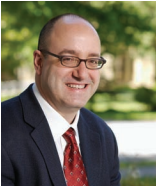Creating a Model Environmental Law Program
In this issue of the Lawyer, we turn a well-deserved spotlight on the law school’s environmental program. Stanford has long been a leader in the field of environ-mental studies, and our program serves as a model for other, newer programs.
The foundation of any program is its faculty, and the environmental program is no exception. Headed by Buzz Thompson JD/MBA ’76, whose leadership in the field is widely acknowledged, our environmental group includes professors John Barton ’68, Hank Greely, Tom Heller, and Bob Rabin. This past year, we appointed Meg Caldwell ’85 as a senior lecturer responsible for teaching, supervising research, and administering the program. Meg is, among other things, chair of the California Coastal Commission and a nationally recognized environmental figure. As accomplished as our environmental faculty is today, we plan to strengthen and enlarge it. One of the ways we will do this is by bringing in teachers from other parts of the university. These include people like David Victor, an expert in energy and the environment and a senior fellow at the Freeman Spogli Institute for International Studies.
Our superb faculty offer students a wonderfully diverse range of courses. In addition to basic survey courses, we teach advanced courses on animal rights, climate change, ocean policy, land use, “free market environmentalism,” and more. Add to these a variety of “enrichment” courses that enhance professional skills by teaching such subjects as public policy analysis, negotiation, and working with international institutions. Many of these courses are taught through case studies developed by our faculty. Modeled on the sorts of materials used in business schools, these studies take students deeply into problems while developing the teamwork skills needed to succeed in a real world setting. Stanford makes these case studies freely available on the Internet, and they are used at law schools across the nation.
Faculty and curriculum are the backbone of every academic program, but what makes Stanford special is the breadth of additional opportunities we afford students interested in environmental work. Our Environmental Law Clinic, directed by Deborah Sivas ’87, enables students to participate in cutting-edge litigation. The clinic was originally funded by the non-profit public interest group Earthjustice, which fed us cases. We recently brought the clinic back in-house because it is important that we have full control—to choose cases based on pedagogical value, dedicate more time to teaching, and integrate the clinic better with other parts of the university.

Stanford law students have a myriad of other opportunities to work on environmental research. The law school is involved in the Fisheries Policy Project, a joint venture with Stanford’s Hopkins Marine Station that brings together faculty and researchers from across the university. Students can work on the Stanford Environmental Law Journal or attend the weekly Environmental Workshop and the annual Robert Minge Brown Lecture. They can also become members of the Environmental Law Society (ELS), which sponsors speakers and panels, publishes newsletters, and maintains a network for career development.
Given this rich and diverse program, it comes as no surprise that Stanford law graduates pursue distinguished careers on every side of the environmental debate. Our alumni hold positions in national environmental organizations, the White House, federal and state agencies, major corporations, law firms with strong environ-mental programs, and the academy.
For all this success, we continue to grow and change. We are taking steps to enlarge our connections to Stanford University’s world-class program in environmental studies. The university is preparing to launch an environmental initiative centered on the new Stanford Institute for the Environment (SIE). With Buzz as one of its two codirectors, SIE is a place for lawyers to work with scientists, policy makers, and environmentalists. We are revamping our clinical and research programs to make better use of the university’s resources by bringing environmental scientists to work at the law school with our students and faculty. We hope soon to begin offering joint degrees to enrich traditional legal education in this area as well. These will include a joint JD and masters degree in environment and resources (with the School of Earth Sciences), a similar degree in international policy studies (with the Freeman Spogli Institute for International Studies), and yet another in public policy (with the Stanford Institute for Economic Policy Research).
Making all this work will not be easy. But with our faculty and students, and your advice and support, I am confident we can keep Stanford Law School as the nation’s most important training ground for lawyers working on environmental issues
